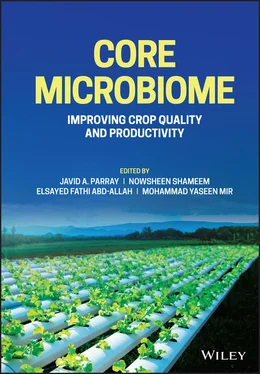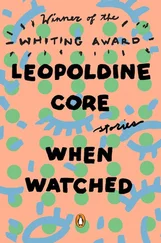3.5.1.2 Phytochemical Genomics in Medicinal Plants
Integrated approaches were followed for phytochemical genomics in medicinal plants and their correlation among corresponding elements, such as transcriptome and metabolome, and after which, their successful application in medicinal plants produced bioactive specialized metabolites. For this purpose, next-generation sequencing triggers transcriptome study for an analysis of the co-response of the compound gene that is activated during the stress response. Catharanthus roseus transcriptome co-expression results predicted that specific genes are linked to monoterpenoid indole biosynthesis (Giddings et al. 2011) as a result of converting oxogeranial to iridoid scaffold (Geu-Flores et al. 2012). As part of the chemical expression profiling for quinolizidine alkaloids in Lupinus angustifolius , gene encoding lysine decarboxylase, the first step of the alkaloid biosynthesis was characterized. Moreover, the molecular basis for the catalytic property of the enzyme was elucidated by site-directed mutagenesis and protein modeling (Winzer et al. 2012).
In studying the expression of plant stress response, protein profiling is important as it directly reflects phenotypic traits. It was also helpful in determining the physiological and metabolic pathway and plant–microbe protein interaction. Comparative analysis of non-stressed stress and target proteins associated with plant–microbe interaction can help identify target proteins and networks (Karthik et al. 2014). The differences in the metabolic pathway among microbes make them more responsive toward stress conditions. The meta-proteome analysis and resolution technique are relatively difficult. The extraction and analysis of meta-proteome data could provide significant output and give a better response among organisms toward stresses. The haloarchea and halobacteria are getting much attention due to their ability to thrive under high salinity stress. Under in situ conditions, culturing of these organisms is used to persuade effective metabolites to impart tolerance against stress. GC-MS/MS protein profiling was used for Araucaria angustifolia at the embryogenic stage to figure out large-scale protein identification against cold-tolerance. About 106 differentially expressed protein data were collected from the blocked type and stress response varieties (Dos Santos et al. 2016). The ginsenosides protein samples were taken from hairy roots of ginseng and proteome analysis predicted that about 20% of selected proteins originated from energy metabolism and stress response (Nam et al. 2005). Milky sap isolated from C. majus L. produced different types of protein signals such as a nucleic acid-binding protein that could be favorable under stress conditions (Nawrot et al. 2013). Moreover, aldolase , G3P dehydrogenase , and enolase were also identified as isotypes during the analysis (Nam et al. 2005).
3.6 Medicinal Plants: Plant- and Microbe-Derived Ingredients
Plants contain many active biological compounds, and plant-based medicine has been a part of traditional health care in most parts of the world, the most important being traditional Chinese medicine, phyto-therapeutic knowledge from the Mayans, Australian aboriginal medicine, and many other cultures that provide a huge spectrum for natural remedies exploited as therapeutic agents. Up till now, more than 5000 plant species biological compounds have been used against many diseases, providing the basis for the discovery of modern drugs, i.e. anticancer agents (Miller et al. 2010). These bioactive phytochemical compounds shift toward phyto-therapeutic agents produced by specific microbes during plant–host interaction (Compant et al. 2010).
Chinese medicinal plants such as ( Ainsliaea henryi Diels, Potentilla discolor Bge, Juncus effusus L. var. decipiens Buchen, and Rhizoma arisaematis ) showed specific actino-bacterial community and remarkable colonization with actinobacteria (Zhao et al. 2012). Moreover, they also showed antimicrobial and anticancer characteristics (Zhao et al. 2011). The levels of metabolites changed under stress conditions and produced hemiterpenoid compounds responsible for mitigating stresses. Ward et al. (2011) reported the isoprenoid pathway in Arabidopsis in leaves, which was diverted to hemiterpenoids. Such compounds are induced by root wounding or oxidative stress while being weakly induced by potassium deficiency. However, other stresses such as osmotic, cold, or saline stress did not induce compounds production. Nutrient deficiency stress has an impact on metabolism as well as hemiterpenoid glycosides production in leaves as compared with scopolin and conifer productions in roots. Sulfur deficiency in crops also affects secondary metabolites production and results in a reduction in the synthesis of glucosinolates (Kusano et al. 2011) and induction of anthocyanin biosynthesis. Glucuronosyl–diacylglycerol reportedly reduced stress metabolites under phosphorus-deficient stress (Okazaki et al. 2013), which could be used as lipidomics function genomics (Okazaki et al. 2013). Modern research predicted that a significant number of natural products are produced by microbes and supposed that endo-microbiome (plant–microbe) is involved directly or indirectly in producing phytochemicals. On the other hand, the only subset of potential microbial strains was qualified as phyto-therapeutic properties (Chandra et al. 2012) while their contribution toward known bioactivity of medicinal plants is not clear yet. Bioactive compounds released by the host plants and the microorganisms that produce those compounds with therapeutic properties are shown in Table 3.3.
Table 3.3 Bioactive compounds that are released by host plants and the microorganisms involved in the production of therapeutic properties.
| Bioactive compound |
Therapeutic properties |
Host plant |
Producing microorganism |
References |
| Cochliodinol |
Antibacterial, antimycotic, anticancer |
Salvia officinalis |
Chaetomium sp. |
Debbab et al. (2009) |
| Botryorhodines |
Antimycotic, anticancer |
Bidens pilosa |
Botryosphaeria rhodina |
Abdou et al. (2010) |
| Phomol |
Antiphlogistic, antibacterial |
Erythrina crista-galli |
Phomopsis sp. |
Weber et al. (2004) |
| Podophyllotoxin |
Anticancer, antiphlogistic |
Podophyllum hexandrum, Juniperus communis |
Alternaria sp., Aspergillus fumigatus |
Yang et al. (2003) |
| Camptothecin |
Anticancer, antiviral (HIV) |
Nothapodytes foetida, Camptotheca acuminate |
Entrophospora infrequens, Fusarium solani |
Puri et al. (2005) |
| Maytansine |
Anticancer |
Putterlickia verrucosa |
Actinosynnema pretiosum |
Wings et al. (2013) |
| Rohitukine |
Antiphlogistic, anticancer |
Dysoxylum binectariferum |
Fusarium proliferatum |
Mohana Kumara et al. (2012) |
| Munumbicins |
Antibacterial, antimycotic |
Kennedia nigriscans |
Streptomyces sp. |
Castillo et al. (2002) |
| Kakadumycins |
Antibacterial, antiplasmodial |
Grevillea pteridifolia |
Streptomyces sp. |
Castillo et al. (2003) |
| Coronamycins |
Antimycotic, antiplasmodial |
Monstera sp. |
Streptomyces sp. |
Ezra et al. (2004) |
3.7 Biological Control and Plant Improvement
Читать дальше











